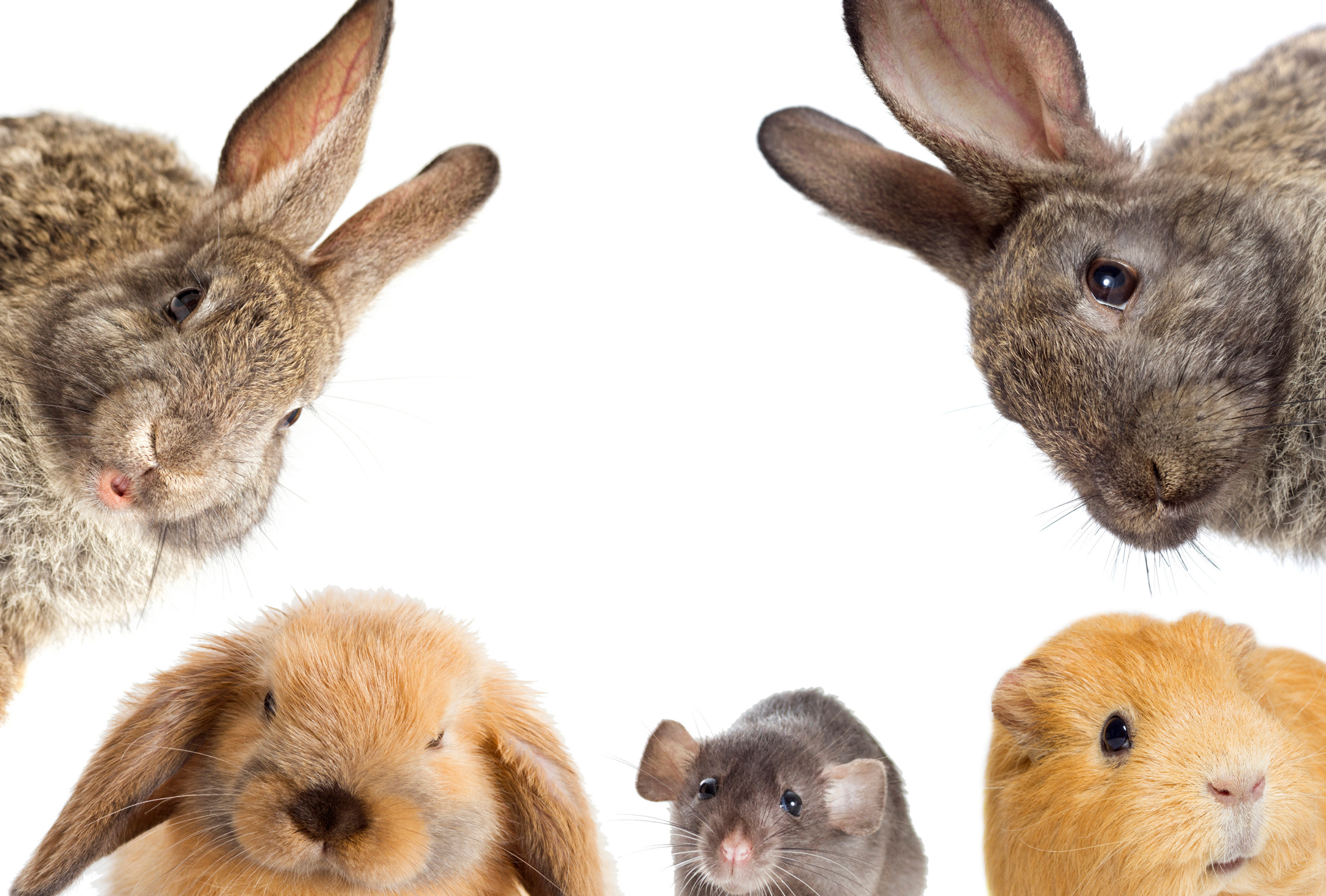
Hamsters
When you are looking to add a pet to your family, there are many options to choose from other than cats and dogs. Plenty of cuddly and furry pets are more compact, easier to care for, affordable, and do not require as much attention. Small pets are good options for children older than 5 because they can be a great way to teach responsibility. To decide which small animal might work as a family pet, you should do as much research as you would when choosing a larger pet. Some of the most popular small pets, such as hamsters and guinea pigs, might look similar but are very different in terms of their needs and how they interact with kids. When deciding on a small pet for your family, consider these options, each one with its own unique needs and characteristics.
This classic small pet is easy to care for, but hamsters can be rather nippy, and small breeds (females in particular) can be aggressive, making them difficult to handle. Larger breeds such as the Syrian hamster, are more likely to accept being handled. A hamster should also be kept in a cage that is roomy, with tunnels and nesting areas for sleeping, but make sure you can clean the cage easily. They typically live for about 3 years, so this may be your child’s first experience of death and grief. It can be sad, but also a way to introduce the idea that everything dies and you can be there as your child goes through the experience.

Guinea pigs
Guinea pigs may be in the same rodent family as hamsters, but their demeanour is markedly different. They are gentle and have a sweet disposition, which makes them less likely to bite. Plus, they can be sociable, which means they do not generally mind being (properly) handled or interacted with. This makes them ideal first pets. Consider getting another guinea pig as a companion, so the pet will not get lonely. Guinea pigs have a life span of 5-7 years, and they require more time and effort because of their bigger appetite for lots of hay and vegetables. This bigger appetite can make guinea pigs messier than other small mammals, so you might have to clean their cage more frequently as well.

Gerbils
Gerbils are easy to take care of but not very cuddly, so ideal for kids who do not want to be so hands-on. Unlike guinea pigs, gerbils have a relatively short lifespan – about 2 years. It is easy to feed gerbils because they have a standard diet similar to that of rats and hamsters: rodent pellets and food blocks, along with some supplemental seed mixes. Gerbils are not usually aggressive, so they can also be held, but they are very fast, so it is easy to drop them or for them to escape from you. This quickness means a lot of activity in the cage, which could pique your child’s curiosity. Gerbils are more sensitive to their environment than other small animals, however, and humidity can give them respiratory and fur problems. If you are concerned that your environment might be too humid for a gerbil, consult your veterinarian.

Rats
A rat might not be the first pet on your list, but they make some of the best pets for small children. Rats are often calm, laid-back, not as nippy as other small mammals, and they can be handled a lot. They make ideal pets if you want your child to develop a strong bond with a pet, because they are interactive and able to learn tricks, such as retrieving objects and navigating mazes or obstacle courses. Since rats enjoy interacting with people and things, providing a number of toys and accessories, from ropes to paper-towel rolls, will keep them happy and occupied. Rats are also easy to care for and require a standard rodent pellet diet. However, like gerbils, rats have a short lifespan ranging from two to three years.

Rabbits
These popular pets are good for young children as long as there is adult supervision. Like guinea pigs, rabbits are good for younger kids because they usually have a gentle and sociable nature, larger breeds especially so. Rabbits should be neutered to prevent any aggression (and to prevent uterine cancer in females). This is especially important if you want to keep more than one rabbit in the same space. A rabbit can live from 8 to 12 years, can be litter-trained (‘house rabbits’), and is easy to care. A proper diet is very important to ensure the animal’s dental health: grass hay, rabbit pellets, and vegetables.

Chinchillas
Chinchillas are an interesting option for kids who want to watch what their pet does, rather than have direct interaction with it. Although they are gentle, chinchillas can be very agile and quick and may not be appropriate for young children who are not adept at handling. They need a diet of chinchilla pellets and hay, with vegetables as a treat. Chinchillas also need a dust bath two to three times a week, given outside of its cage; the cage should be multilevel so it can climb up and down. You should be aware of the longer lifespan of 12 to 15 years before committing to getting a chinchilla.
Of course, besides furry pets there is a whole other world of less cuddly options… stick insects, spiders, ants, fish, sea monkeys. You just need to do the research and figure out what works best for your family.
If you are a Retailer in the GCC and are interested in selling our products, Contact Us now.
If you are a Pet Owner, find our nearest Retailer in Our Brands section.
Written on February 15, 2022

